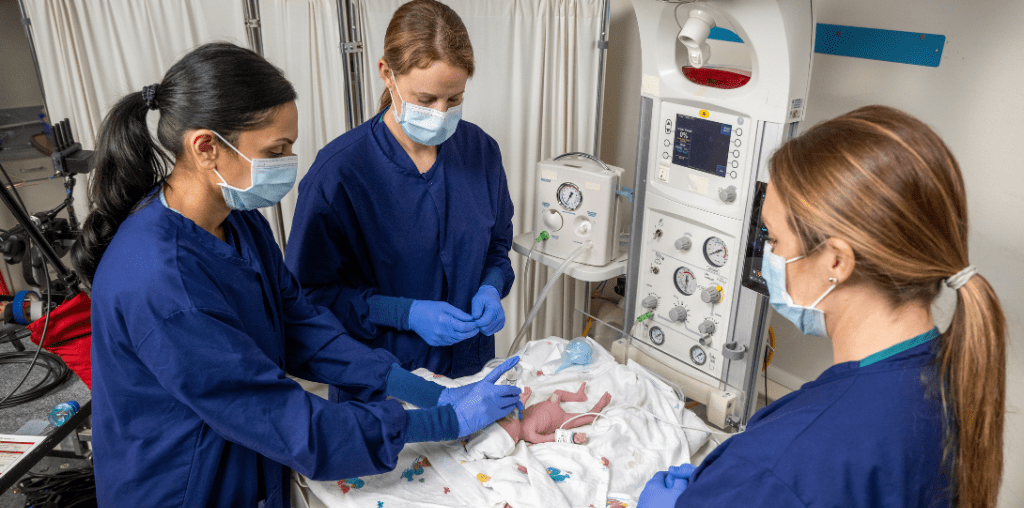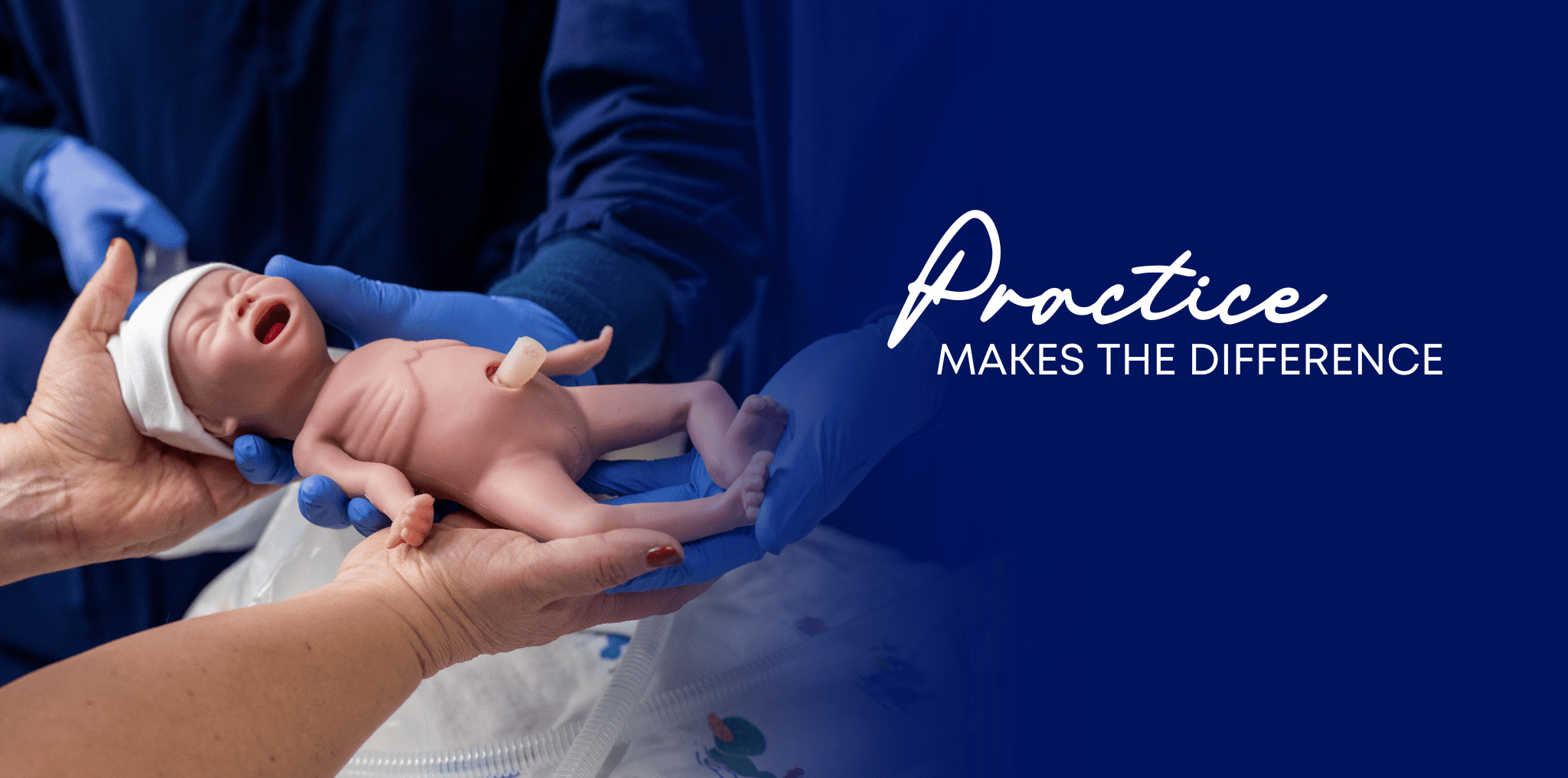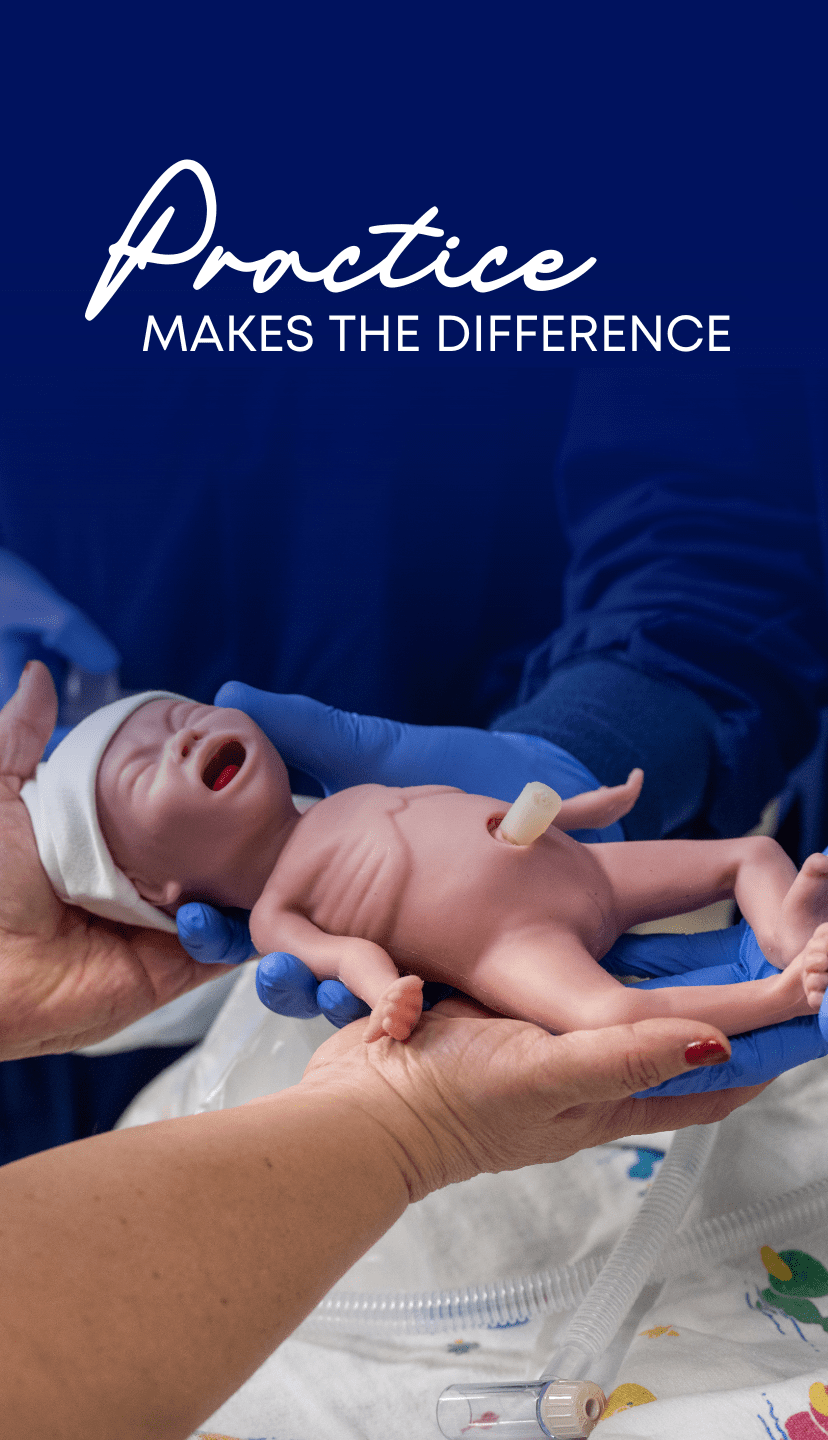Why Our Simulation Center is Central to Texas Children’s Culture of Continuous Learning
A team of Texas Children’s Hospital specialists gathers in a surgical suite, preparing for one of the most complex surgeries imaginable—the separation of conjoined twins. Neonatal and pediatric surgeons, anesthesiologists, nurses and respiratory therapists rehearse every step. They’ve placed together two high-fidelity mannequins to simulate the separation and use a 3D-printed model of the twins’ organs to identify challenges and refine their approach. When the actual separation takes place, the team will have already practiced multiple times; adjusting techniques, streamlining communication and ensuring the safest possible outcome for the patients.
This level of preparation is made possible by the Simulation Center at Texas Children’s, a hospital-based training facility dedicated to patient-centered pediatric and obstetric simulation training. Here, healthcare professionals engage in hands-on practice and preparation that strengthens technical skills while enhancing teamwork and communication in a variety of scenarios.
According to the Simulation Center’s Medical Director Dr. Cara Doughty, most medical errors are due to human factors, not knowledge gaps. “Simulation allows us to learn how to communicate with each other, focusing on teamwork and decision-making in a safe environment.”
How Simulation Training Saves Lives and Enhances Patient Safety
High-fidelity mannequins mimic human physiology, responding to interventions just as an actual patient would. Neonatal resuscitation drills teach rapid intervention for newborns in distress. Obstetric simulations help labor and delivery teams manage high-risk births. At the Simulation Center, healthcare providers train in realistic scenarios that challenge them to think critically under pressure—building confidence for real patient care.
“People often think of simulation in terms of resuscitation and emergency response, but we do so much more” says Dr. Doughty. The Simulation Center offers education and training on effective leadership rounding to help clinical leaders structure their approach to dialog with patients and staff. These sessions often engage team members to play roles different from their own for an alternative perspective. Other communication-focused curriculum uses trained actors to help providers practice their delivery of life-changing news to families.
Simulation at Texas Children’s is not purely an educational tool; it is an essential part of operations, playing a key role in hospital-wide quality and safety initiatives. Before Texas Children’s opens a new clinical space, teams conduct simulation-based testing to identify potential inefficiencies or safety risks. This proactive approach ensures that new hospital environments are optimized for both providers and patients before they go live.

Simulation Training in Action: Strengthening Skills and Teamwork Across Disciplines
Effective teamwork is critical in high-pressure healthcare environments, and simulation training at Texas Children’s is designed to foster multidisciplinary collaboration. Nurses, physicians, respiratory therapists, and support staff train together as teams, developing a shared understanding of roles and responsibilities no matter the situation.
To support this effort, the Simulation Center team consists of education specialists, medical directors, technical specialists and coordinators, all of whom undergo specialized training in simulation education. Their expertise ensures that Texas Children’s is a leader in integrating simulation into all areas of our hospital system.
“It’s hard to identify gaps in your own processes, which is why having a dedicated simulation team is so important,” Royanne Lichliter, director of Quality, Education and Simulation, explains. “We bring an outsider’s perspective and the expertise to identify risks that teams might overlook.”
Debriefing is a vital part of each session. After every simulation, participants review their performance through video analysis and guided discussion. This reflection allows them to assess their actions, adjust strategies and reinforce best practices for learning and improvement.
A Growing Investment in Hands-On Simulation Training
Texas Children’s established the Simulation Center in 2009 to provide medical simulation training in a controlled environment. Since then, it has expanded into a system-wide resource for developing clinical expertise and improving patient safety.
When the center first opened, it hosted fewer than 40 simulations. That number has increased annually by about 20 percent, climbing to 880 simulations—more than 21,000 hours of training—across the system in 2024. The program now reaches healthcare professionals across Texas Children’s locations, including the Medical Center, West Campus, The Woodlands and Austin.
“We rarely say no,” says Royanne. “If a team requests a new simulation, we find a way to make it happen. We’re constantly evolving to meet the needs of our providers and patients.”
Physicians, nurses, respiratory therapists, and emergency response teams participate in specialized education and training programs designed to refine their skills in neonatal resuscitation, high-risk deliveries and critical care scenarios. However, the impact extends beyond clinical teams. Language services, child life specialists, and even our facility dog teams have participated in simulation exercises, making sure that every aspect of patient care is supported by well-prepared professionals. Royanne adds:
“Simulation has really become part of Texas Children’s culture. There’s hardly any area that we don’t touch now with simulation, which is something we’re very proud of.”
By integrating simulation into daily operations, Texas Children’s has created a learning culture where preparation leads to better patient outcomes. Every training session builds confidence and strengthens collaboration, reinforcing the hospital’s commitment to teamwork and patient safety.
“The demand for simulation is huge, and Texas Children’s teams have developed expertise in caring for patients who are one-in-a-million or one-of-a-kind,” says Dr. Doughty. “We are very lucky to have the resources and infrastructure we do at Texas Children’s, but our Simulation Center is still growing.”
Join a Team That Prioritizes Education and Training
At Texas Children’s Hospital, training of the healthcare professionals on our team is woven into the fabric of world-class patient care. In addition to pediatric and obstetric simulation training, our hospital offers a range of educational opportunities, including professional development and our Nurse Mentorship Program, Continuing Medical Education (CME) courses, conferences, fellowships and residencies.
By fostering a culture of continuous learning, Texas Children’s ensures that employees at every stage of their careers have access to the resources they need to grow and excel in a supportive environment.
If you’re looking for a workplace where purpose, collaboration, excellence and innovation make a life-changing difference, join us and Be the Difference. Explore careers at Texas Children’s and apply today.





